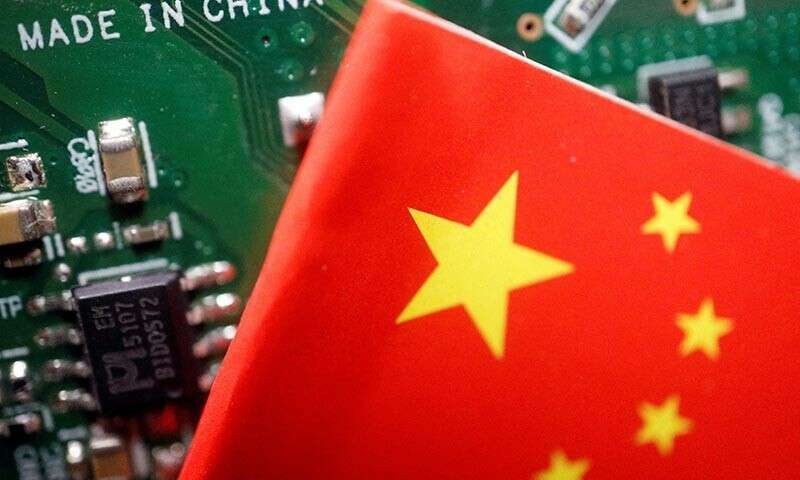The United States has announced its latest crackdown on China’s semiconductor sector, marking the third such effort in three years. This action, set to be officially implemented on Monday, targets approximately 140 companies, including some of China’s leading chip equipment makers, such as Naura Technology Group, Piotech, and SiCarrier Technology. With these new restrictions, the US aims to slow down China’s progress in semiconductor manufacturing, particularly as it relates to the country’s ambitions in artificial intelligence (AI) and military technologies.
The decision comes as the US continues its strategy to block China from accessing high-tech components critical for advancing military capabilities and artificial intelligence. This new move, coinciding with the upcoming swearing-in of former president Donald Trump, is expected to see continued hard-line policies toward China, particularly in the technology space. The package includes additional export controls on both high-performance memory chips and the equipment needed to manufacture them.
US Restrictions: The Key Points
The new export restrictions are part of the US government’s ongoing effort to curb China’s semiconductor capabilities. Here’s a breakdown of the key measures:
H1: Expanding the Entity List
The Entity List is a roster of companies to which US exporters are prohibited from selling goods without a special license. As part of the latest sanctions, several high-profile Chinese companies will be added to this list. This includes Swaysure Technology Co, Qingdao SiEn, and Shenzhen Pensun Technology Co, all of which are believed to have connections with Huawei Technologies, a company already facing severe restrictions from the US.
The new restrictions will prevent US companies from selling advanced semiconductor components, tools, and software to these firms unless they are granted a special license, which is rarely issued. These moves will be particularly damaging to China’s efforts to bolster its semiconductor industry and its AI capabilities, which rely heavily on the use of advanced chips.
H2: Expanding Export Curbs on Chipmaking Tools
A significant aspect of the new sanctions is the additional export restrictions placed on semiconductor manufacturing tools, which are critical for the production of the most advanced chips. These tools, often provided by US companies like Lam Research, KLA, and Applied Materials, are vital for producing next-generation chips. The new restrictions will also affect foreign companies like ASM International based in the Netherlands, which manufactures tools that are crucial for chip production.
This move could have a far-reaching impact on the global supply chain for semiconductor equipment, as many countries, such as Singapore and Malaysia, will be forced to comply with US sanctions when shipping equipment to Chinese companies. These export curbs extend beyond the US and are likely to cause significant disruptions in the global semiconductor market.
H3: Memory Chips and AI Technologies
Among the most significant targets of the new export controls are high bandwidth memory (HBM) chips, which are crucial for AI applications like machine learning and deep learning. The US is restricting the export of HBM chips to China, focusing particularly on chips produced by companies like Micron Technology, Samsung Electronics, and SK Hynix. These chips are essential for high-performance computing, and their restriction could severely hinder China’s AI ambitions, especially in military applications.
In addition to HBM chips, the sanctions also target the export of 24 additional chipmaking tools and three software tools, further limiting China’s ability to scale its semiconductor production.
China’s Response and Future Implications
H1: China’s Push for Self-Sufficiency in Semiconductors
In recent years, China has ramped up efforts to achieve self-sufficiency in semiconductor production. This is in response to the increasing difficulty of sourcing advanced chips from foreign suppliers due to ongoing trade tensions with the United States and other nations. Despite significant investments in domestic chip manufacturing, China still lags behind the global leaders in the semiconductor industry, such as Nvidia in AI chip production and ASML in chipmaking equipment.
China’s government has been heavily investing in local companies and research to bridge this technological gap. However, the new US sanctions further complicate China’s ability to close this gap. The country’s inability to access cutting-edge equipment and chips from leading global suppliers will likely slow down its ambitions to become a global leader in AI and semiconductor technologies.
H2: Response from the Chinese Government
The Chinese government has reacted strongly to these latest US restrictions. Lin Jian, a spokesman for China’s foreign ministry, criticized the US for undermining international trade norms and disrupting global supply chains. He emphasized that China would take necessary actions to protect the rights and interests of its companies in response to the sanctions.
Despite these challenges, China is expected to continue pushing for domestic innovation in its semiconductor industry. With an eye on long-term self-sufficiency, China may ramp up its efforts to support local chipmakers and expedite the development of indigenous technologies.
Impact on Semiconductor Toolmakers
H1: US and Foreign Companies Affected
The export restrictions are not only a blow to Chinese firms but also to global semiconductor toolmakers. Lam Research, KLA, and Applied Materials are some of the US companies that stand to lose a significant portion of their market in China due to the new rules. In addition, ASM International, a Dutch company, will also be impacted, as it supplies critical equipment for the production of advanced semiconductor chips.
In terms of international relations, the US has worked closely with countries like Japan and the Netherlands to ensure that their companies also comply with these export restrictions. However, the US has exempted Japan and the Netherlands from certain parts of the sanctions, a move that may help maintain their semiconductor industries’ stability while still targeting China’s most advanced chipmaking capabilities.
Future Prospects for Global Semiconductor Markets
H2: Will China’s Self-Sufficiency Goals Be Achieved?
China’s long-term goal is to become self-sufficient in semiconductor production, a crucial step for achieving technological independence. However, the new export restrictions make it clear that this goal is far from being realized in the short term. While China has made significant strides in advancing its domestic semiconductor capabilities, the country still lacks the most advanced equipment and materials, such as those used for AI chip production, which are critical for competing on the global stage.
Despite the challenges, China is likely to continue investing heavily in its semiconductor industry, hoping to build the capabilities needed to reduce its dependence on foreign suppliers.
H3: A Broader Global Impact
The US’s ongoing crackdown on China’s semiconductor industry is not just a bilateral issue but a matter of global importance. As the world’s largest economies battle for supremacy in cutting-edge technologies, such as AI and semiconductor manufacturing, the ripple effects are being felt across industries and countries.
The impact of these restrictions will be especially significant in regions that rely heavily on Chinese semiconductor manufacturers, as these restrictions could disrupt supply chains and increase production costs for companies worldwide. However, in the long term, these sanctions may force China to accelerate its domestic capabilities, creating a more self-sufficient and potentially more competitive industry.
Frequently Asked Questions (FAQs)
1. What are the new US export curbs on China?
The US has imposed new export restrictions on China’s semiconductor industry, targeting over 140 companies, including chip equipment makers like Naura Technology Group and Piotech. These restrictions are intended to limit China’s ability to develop advanced chips for AI and military applications.
2. Why is the US targeting China’s semiconductor industry?
The US aims to curb China’s ability to access and produce advanced chips that could enhance its military capabilities and artificial intelligence technologies, which are viewed as potential threats to US national security.
3. How will the new US restrictions affect Chinese companies?
Chinese companies, such as Huawei Technologies and others involved in semiconductor production, will face difficulties in acquiring crucial technologies and equipment needed to advance their chipmaking capabilities.
4. What impact will the new restrictions have on global semiconductor toolmakers?
US-based companies like Lam Research, KLA, and Applied Materials will see reduced market opportunities in China. Additionally, foreign companies like ASM International will also be affected by the curbs.
5. How is China responding to the US restrictions?
China has condemned the US sanctions, calling them disruptive to global supply chains and international trade norms. China is likely to continue efforts to develop its domestic semiconductor industry to reduce reliance on foreign technologies.
ALSO READ:
https://flarenews.pk/2024/12/02/jansher-khan-inducted-into-psa-hall-of-fame-a-legendary-achievement/



